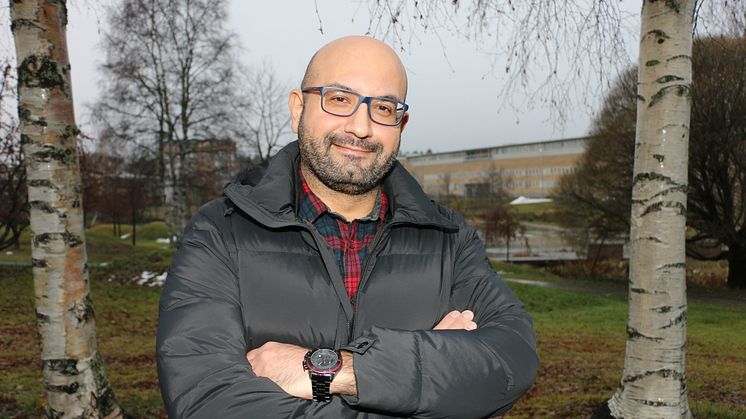
Press release -
Autonomous forestry and farming: how close we are?
Autonomous systems can increase performance, reduce injury risk, save energy and money, and reduce the need for labor in agriculture and forestry. Ahmad Ostovar has developed methods and algorithms for systems with the capacity for automatic detection and recognition of objects in outdoor environments. He defends his thesis on December 5 at Umeå University, Sweden.
Manual agricultural and forestry operations in outdoor environments is always challenging due to environmental conditions such as extreme temperatures and difficult working situations. Manual harvesting of crops are highly labor intensive and are becoming increasingly costly at the same time as the availability of skilled labor force is decreasing. Furthermore, working in such environments poses a high risk to the health of the humans working there. The labor issue is predicted to become even more critical with both cost and shortage of labour increasing in the future.
Therefore, utilizing robots for automatic fruit harvesting, farming, and forestry operations is essential as a response to this. Autonomous systems decrease the risk of human injuries, lower the harvesting cost by speeding up the operation, energy, reduce the dependency on labor, and generally increase the performance of operations. This is beneficial for both producers and consumers.
The most crucial step in developing autonomous systems is perceiving the environment by using data received from different sensors such as RGB cameras, depth, lasers, and infrared sensors.
Finding the location and class of the target object (e.g. fruits and trees) are also essential for autonomous systems, which are performed by using machine learning techniques for analysing the sensor data.
Outdoor environments such as orchards, greenhouses and forests are highly unstructured and dynamic. These can give problems such as shadows, changing light intensity, and occlusions. Moreover, the variable shape and size of the target objects is an additional difficulty. To develop a successful autonomous system, it must be able to overcome these difficulties.
- In my thesis, I focused mainly on developing methods based on both conventional machine learning algorithms and deep learning approaches using different imaging sensors to support development of autonomous agricultural and forestry systems such that they overcome challenges in outdoor environments.
Despite extensive research in automation of agricultural and forestry operations, the performance of these systems are still not sufficient, and developed systems are not completely ready for the market. In terms of Technology Readiness Levels (TRL), currently many agricultural and forestry robotics systems are available as prototypes.
- Therefore, further research and development on autonomous systems is required to be able to reduce heavy dependency on manual labor in agriculture and forestry fields.
Ahmad Ostovar comes från Iran and has a Degree of Master of Science from Umeå University. His doctoral thesis work has been performed at the Department of Computing Science within the robotics research group. His supervisor is professor Thomas Hellström.
Pressphoto. Photo: Mikael Hansson
About the dissertation:
Thursday December 5 Ahmad Ostovar, Department of Computing Science at Umeå University defends his thesis titledObject Detection and Recognition in Unstructured Outdoor Environments.
The disseration takes place at 13:00 in room MA121, MIT Building.The opponent is associate professor Mårten Björkman, Department of Intelligent Systems, Division of Robotics, Perception and learning, KTH.
For more information, please contact:
Ahmad Ostavar, Department of Computing Science, Umeå University
Phone: +46 72 518 11 11
Email: ahmado@cs.umu.se
Topics
Categories
Umeå University is one of Sweden's largest institutions of higher learning with over 33,000 students and 4,000 employees. We have a well-established international research profile and a broad range of study options. Our campus constitutes an inspiring environment that encourages interdisciplinary meetings - between students, researchers, teachers and external stakeholders. Through collaboration with other members of society, we contribute to the development and strengthen the quality of our research and education.

